Differences that make a difference?
Two early pressed salt dishes show that even heavily collected glass keeps on revealing new and unexpected varieties.
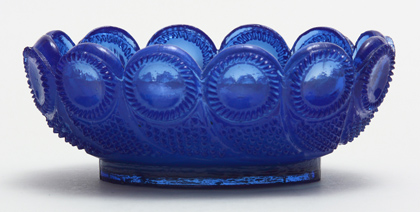
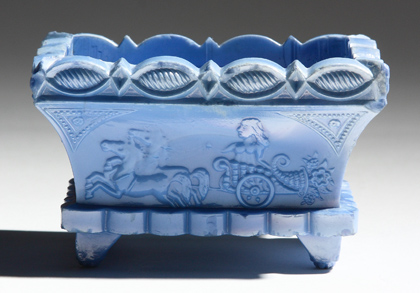
Early pressed glass salt dishes form one of the most attractive groups in early American molded glass.
Small and often colorful, these salts come in a great many forms and patterns, and many patterns come in many varieties. They can be collected by the book ... that book being American Pressed Glass Salts of the Lacy Period, 1825-50 by L.W. and D.B. Neal.
According to the book, the first salt belongs to a group of oval-shaped dishes with "peacock eyes", conveniently called the Peacock Eye, Oval or PO group. This group includes 12 varieties distinguished, as is often the case in the Neal's classification scheme, by their bases.
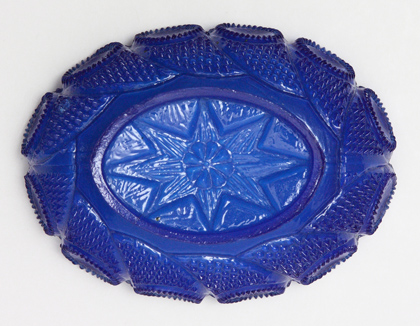
This particular base consists of an oval surrounding a large, 8 point star at the center of which is an 8 point flower:
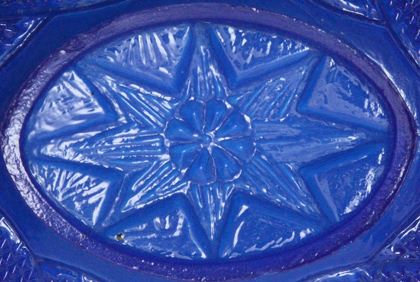
That narrows it down to 3 of the 12 varieties, either PO5, PO6 or PO6a. Now comes a game of spot the difference staring at those three very similar varieties.
Here it helps to apply years of childhood training as a stamp or coin collector and to focus on the flower. PO5's flower is made up only of eight petals while PO6 and PO6a also have a dot at the center. So this must be a PO6 or PO6a and, since the petals of PO6a are actually joined to each other, this must be a PO6! That's really great, since the Neals list this as extremely rare. This salt must really be worth something.
But hang on a minute! Look at the triangles that border the oval, outside the big star:
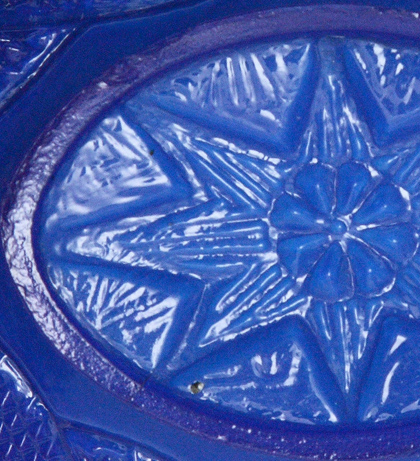
On PO6 those outer triangles are plain, while those of this salt have rays and chevrons, not unlike the rays surrounding the flower on the inside of the large 8 point star. The Neal's PO6 is not like that. What does this mean?
One possibility is that this is a wholly new variety. Another is that the Neal's illustration is for some reason lacking. Either they made a mistake, or they copied a salt that was poorly pressed into the mold.
Unrecorded variety sounds much more exciting. PO6b? It also seems appropriate. The difference that makes this variety different is significant because it makes the pattern more complete. It is easy to imagine the mold of PO6 being modified to add extra ribs and chevrons to the outer triangles. This then becomes a new state of the mold, a significant change indeed.
The lower salt, the one with the chariot, shows a different kind of difference from the standard salt, which looks like this:
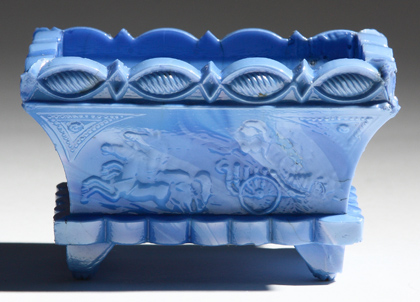
The Neals group these salts into the Chariot or CT group. It has just two listed varieties, with radically different bases.
The second salt and the one immediately above here are both like CT1 (rather than CT1a), but again differ noticeably on their bases:
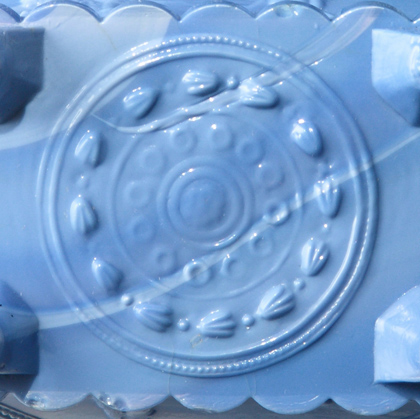
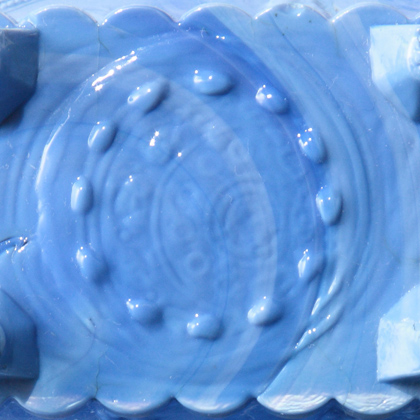
Sure, the coloring is different, with streaks of color that are unique to each salt because they are completely accidental.
More importantly, the base pattern is different. The top example had a relatively clean strike from the mold. The various rings of the design are all neatly concentric, as they should be. However, on the lower example, the central circles and rings and the ring made of many small circles, are all off center, slightly off to the right. Also, the ring of large, proud three pointed leaves has been replaced by a ring of soft dots. The outer rings are very poorly defined indeed.
The lower base does not differ because the mold had been modified. Rather, as it was lowered into the mold, the glass bounced around in the mold. It was first dropped onto the center of the base, which cooled the glass as it picked up an impression of the central rings and ring of circles. It was then lifted slightly and dropped in again, off center. Having cooled from touching the mold, the glass was now more viscous and did not flow into the deepest recesses of the mold.
As a variety, this is a double impression. It is an error by the glassworker as they used the mold.
Unrecorded varieties. Unrecorded colors. Double impressions. And all of that on top of 465 "standard" varieties. These attractive miniature sculptures-in-glass make a wonderful collection.

